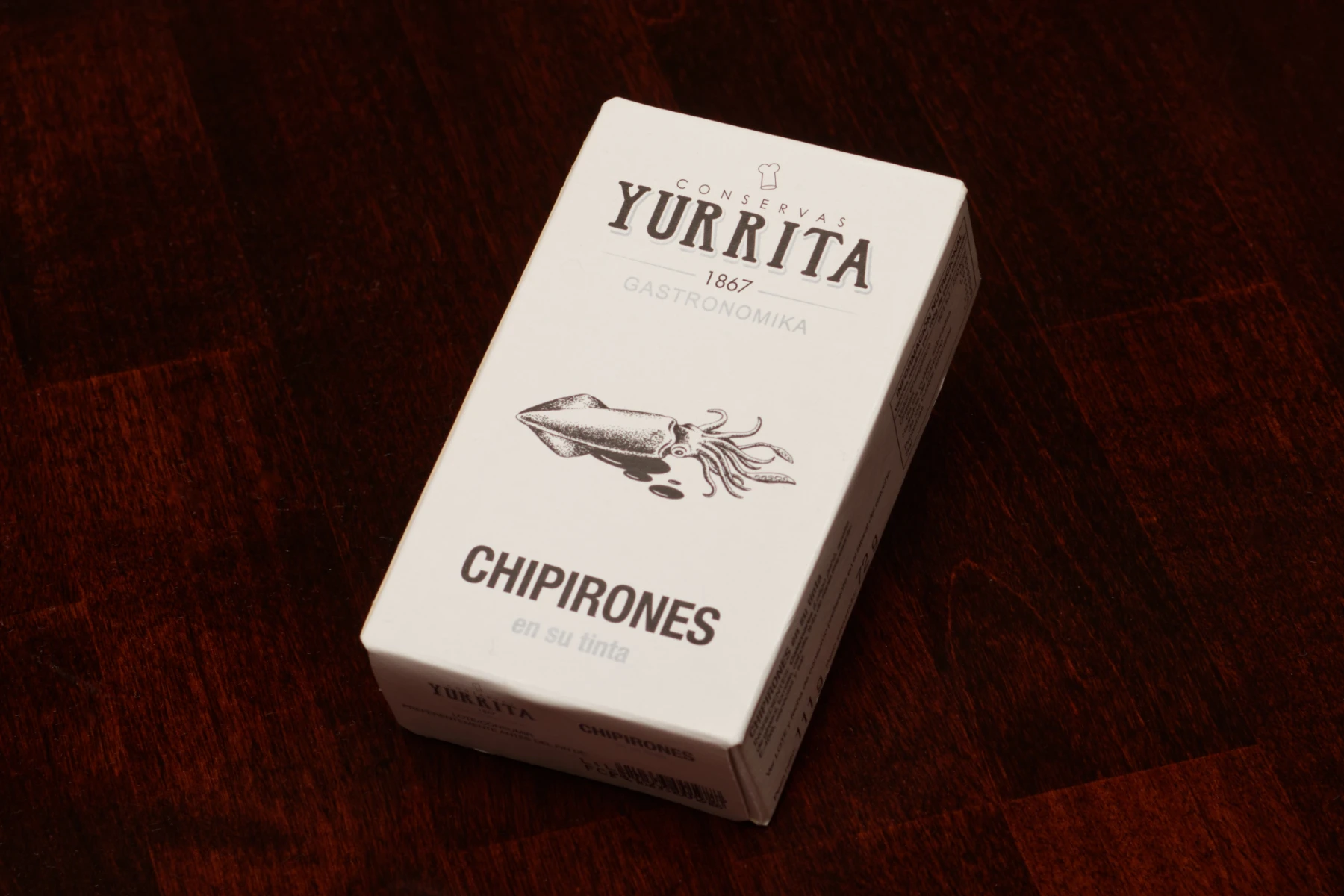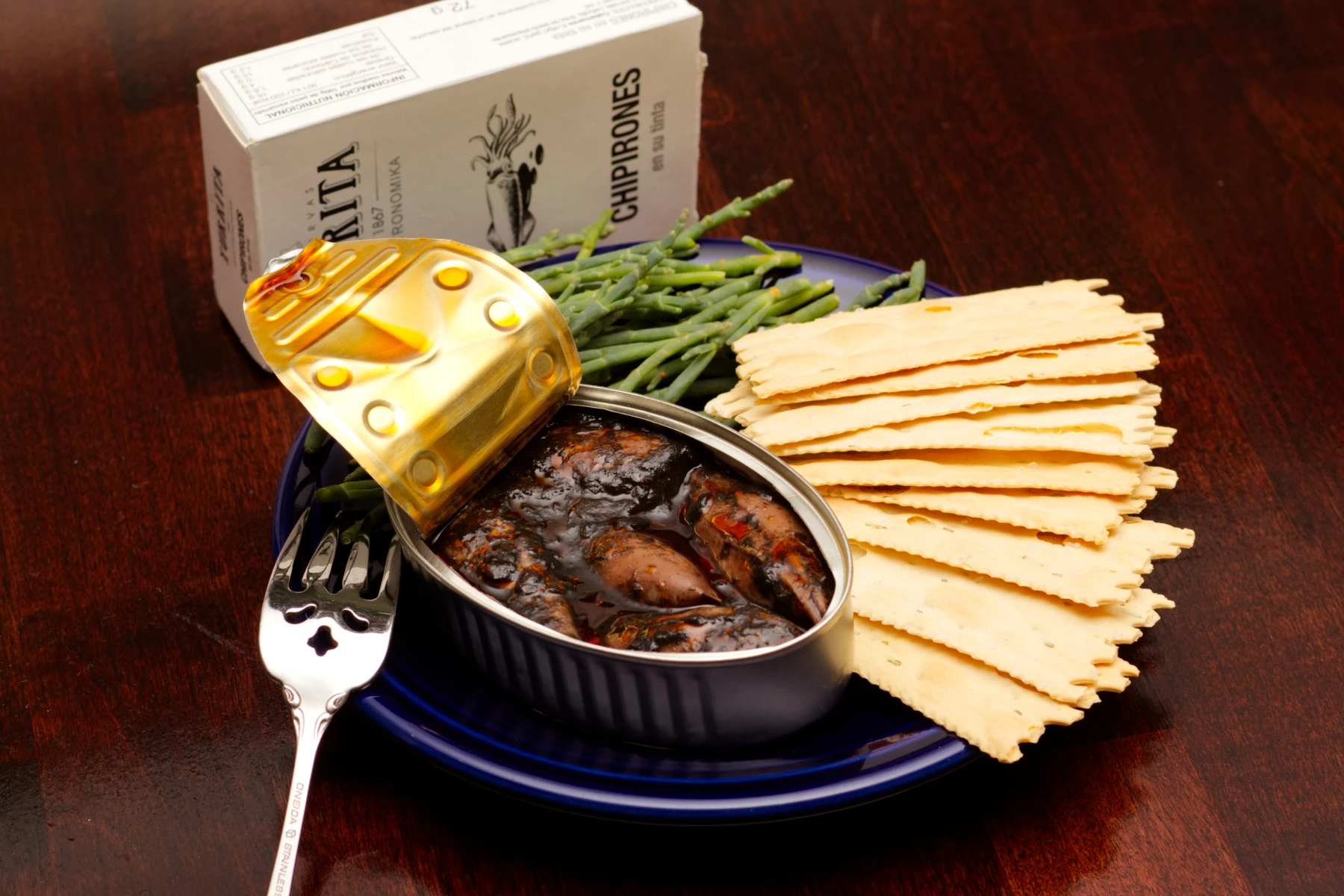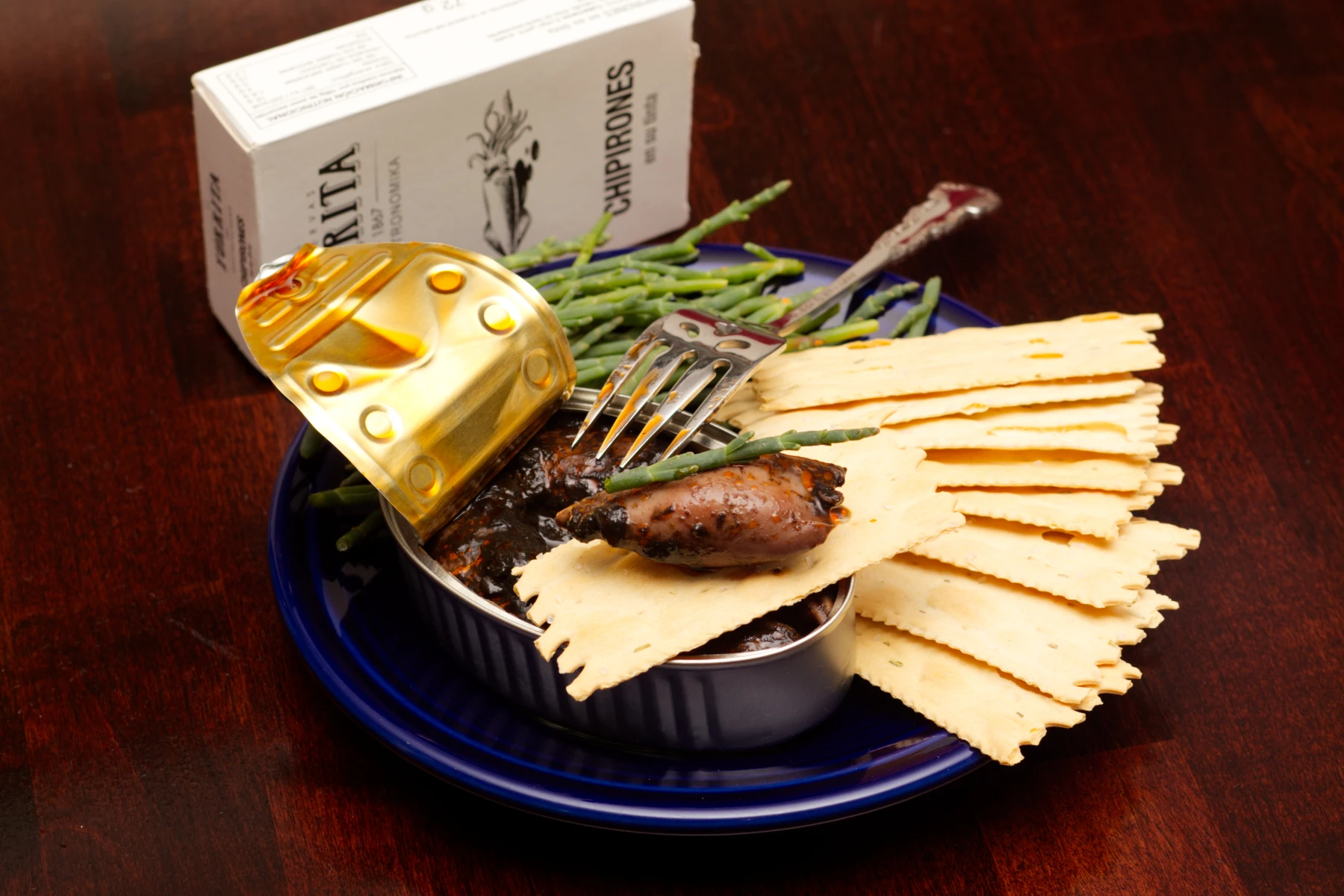Yurrita Chipirones en su Tinta
Something to Write Home About
Originally Published: Sunday, June 4, 2023
Specs
 Chipper chipirones.
Chipper chipirones.Tall, Dark, and Tentacle-y
People who know me in real life would likely know that I have an unhealthy obsession with fountain pens. The hobby of fountain pen collecting is undergoing its renaissance, with more collectors and more makers than even before its decline in the 1960’s (due to the proliferation of disposable ballpoint pens). Before the fountain pen, there was the quill, with which iconic poets and writers of yore were oft portrayed. The quill had been a steadfast companion to writers for over a millennium until the creation of pens.
There is an apocryphal recount of historical sailors which proposes that seafarers used to utilize the hard bone-like structure in a cephalopod and their ink sacs to write messages or journals at sea when there are no other materials available. This body part is called the gladius due to its resemblance of the Roman sword, but it’s colloquially referred to as the quill or pen.
Co-ink-cidence?
Probably.
So, if people didn’t write with the ink sacs of these sea critters, what did they do with them? They ate them, of course.
Today’s product from Spain is the Chipirones en su tinta or Squids in Ink from Conservas Yurrita. This cannery has been in operation for almost 150 years, making it the oldest canning operation in the Basque Country.
 Release the kraken.
Release the kraken.Ink-chanting Image
The minimalist black-and-white boxes from Yurrita gave off a vintage vibe befitting their long history. I pried open the box flaps and slid the contents out cautiously. I was overcome with joy at the sight of the archetypal elliptical tin, an iconic shape that signaled the contents were of an aquatic origin.
The pull-ring produced a satisfying pop when leveraged against the lid and popped off with a bit of resistance. Luckily there was no spillage or explosions of sauce. The tin lid was difficult to remove completely so I kept it attached and furled.
There was not a strong scent that accompanied the opening of the can, but a deep whiff revealed the slightly ammonic odour of preserved squid. A hint of brine was also present. What wasn’t immediately noticeable was the smell of squid ink, which sometimes smells like India ink or Chinese calligraphy ink. There was also a surprising golden-red sheen on the surface of the sauce, which I didn’t expect to see. The back of the box revealed that ink was not the only component of the sauce as the majority ingredient was actually sunflower oil infused with tomatoes and onions. This infusion explained the hue of the sauce.
I loaded a piece of baby squid onto a cracker and garnished it with a piece of sea asparagus I bought from a local forager and took a big bite.
 If you’ve never tried sea asparagus before, you should. It’s quite an experience.
If you’ve never tried sea asparagus before, you should. It’s quite an experience.Ink-redible Flavours
For those of you who are on the fence about eating squid ink, I hope this will get you off that fence. Squid ink is an ingredient with an immense amount of naturally occurring glutamate (as in monosodium glutamate, the extracted sodium salt version of glutamic acid) which means it brings a huge umami punch with every inky drop. A little ink will go a long way in a sauce or soup. It also improves the texture and adds a decadent creaminess to the sauce. This is why squid or cuttlefish ink is a popular ingredient in cream-based sauces and is often added directly to pasta noodles to improve flavour and texture. The squid ink, working in tandem with the tomatoes (another abundant source of naturally occurring glutamate) makes this product an umami bombshell.
The squid itself was tender but had a decent amount of snap. The flavours of the squid itself was pretty subtle, a bit fishy, a bit briny, and a bit ammonic. There was an understated level of salinity in the meat itself. Judging the squid in a vacuum would have made it a pretty boring product, but thankfully we don’t live in a vacuum. Enter, the sauce.
The sauce on first taste was mild and rounded, not overly tomato-y or inky. There were subtle notes of onions and spices accompanying every bite, but they never overwhelmed the primary components of squid and ink. However, this was simply a ruse from the monster of flavour that lurked in the inky depths. Once the subtleties subsided the kraken extended its umami laden tentacles and pulled my tastebuds into the umami abyss.
As mentioned previously in the opening paragraph rant, the squid ink cum tomato combo created such an amazing umami flavour bomb that I couldn’t believe my tongue. The sauce itself was not oily (even though it was 50% sunflower oil), but rather creamy. The squid ink really played a huge part in improving the texture of the sauce. The sauce never left my tastebuds overwhelmed or fatigued, instead it constantly left me wanting another taste.
Needless to say, the sauce was devoured with crackers after the squid was gone. There was a lot of dimensionality in what seemed to be a simple dressing, evolving constantly with each bite. There was also a long, satisfying finish that lingered all the way to the back of the tongue and the soft palate.
 The swirling patterns created by the oil and ink sauce is mesmerizing.
The swirling patterns created by the oil and ink sauce is mesmerizing.An Indelible Mark
This product left an impression on my tastebuds. It never felt like it was trying too hard to please, but it managed to hit all the right marks. It managed to keep itself fresh with an evolving flavour profile but also grounded itself with simple ingredients. I think the balance between quality, quantity and flavour was well struck.
This product sells for about $15 CAD in my local fine food store. While I am thoroughly enthralled with the inky morsels, it’s a difficult price tag for many to swallow. I can’t give it the full three-star rating because of the high price, but I would be remiss not to give it at least two for the experience.
If you see this product on the shelf and you’re an ink-quisitive person, I suggest you give it an open-minded try.